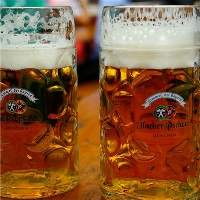According to the past practice, the release time of CET-4 and CET-6 results in December 2022 will be released in February 2023, and the results of CET-4 and CET-6 will generally be released about two months after the end of the exam.
December 2022 Release time of CET-4 and CET-6 results
According to the release time of the scores in previous years, the scores of CET-4 and CET-6 in the second half of 2022 will be released around February 2023. The query portal is Education Examination Network.
Candidates can inquire through the China Education Examination Network and the China Higher Education Student Information Network. For example, the oral test scores of the candidates in the National College English Test Band 4 and Band 6 are Grade D, and their oral test scores will not be reported on the Band 4 and Band 6 Report.
After the reform of CET 4 and CET 6, the full score is 710. Any candidate whose score is more than 220 points will be entrusted by the Higher Education Department of the Ministry of Education of the People's Republic of China to issue the transcripts by the "National CET 4 and CET 6 Examination Committee" without a pass line.
Since CET-4 and CET-6 have stipulated that "those who have scored 425 or more in CET-4 can apply for CET-6", it is generally assumed that the pass line of CET-4 and CET-6 is 425.
Query method for grade 4 and 6:
1. China Education Examination Network
The CET-4 and CET-6 examinees log in to the comprehensive query website of the Ministry of Education's Examination Center, click "Score Query" in the menu bar on the home page, and select to enter the score query page of "CET-4 and CET-6"; Enter the admission card number, examinee name and verification code, and click "Query" to check the score.
2. China Higher Education Student Information Network (Xuexin Network)
The CET-4 and CET-6 examinees log in to the comprehensive query website of the Ministry of Education Examination Center, click "CET-4 and CET-6 query" in the menu bar on the home page, and enter the score query page of "CET-4 and CET-6"; Enter the admission card number, examinee name and verification code, and click "Query" to check the score.
Scoring standard of CET-4 and CET-6:
The original score of CET-4 and CET-6 is 100 out of 100. After a series of complicated conversions, the final score of the CET-4 and CET-6 was 710.
The full score of writing and translation questions in CET-4 and CET-6 is 30, and the converted report score is 212; The full score of CET-4 and CET-6 listening questions is 35, and the converted report score is 249; The full score of the reading questions of CET-4 and CET-6 is 35, and the converted report score is 249.
Writing is an effective way to comprehensively test the examinees' English ability. According to the requirements of CET-4 and CET-6 syllabus, candidates should write a short essay with 120-180 words (CET-4) and 150-200 words (CET-6) according to the specified questions and the provided outlines, scenarios, pictures or charts. Writing questions account for 15% of the total scores of CET-4 and CET-6.
The writing and translation questions of CET-4 and CET-6 account for 30% of the original score of the paper, and the total score of these two questions will eventually be converted into the report score (full score: 212).










